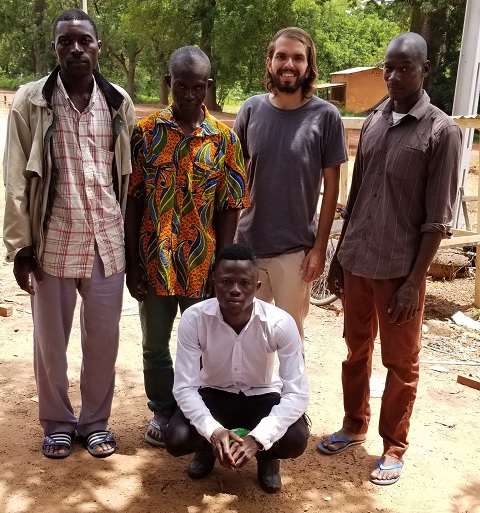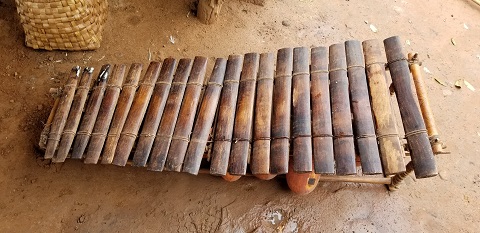Fieldwork

I've been traveling to Burkina Faso since 2018 to document and describe the Toussian languages. Much of my research concerns these languages, and my dissertation is a grammar of the variety of Northern Toussian spoken at the village Djigouera. I approach documentation from a holistic perspective, working with the Toussian community to make diverse recordings and films of many aspects about Toussian culture: fables, oral history, interviews, descriptions of cultural practices, and various musical practices.
Tone
A major component of my research is tonal phonology, particularly the interaction of tone with morphosyntax. The Toussian languages have complex tonal systems, where syntactic and prosodic units are demarcated by floating tones and phenomena like downstep.
Recently, I have been studying double downstep in Northern Toussian, a rare phenomenon where downstep occurs twice at one position, leading to a more precipitous drop in pitch than is typical for a single instance of downstep. There is debate in phonological theory as to 1) whether downstep should be represented in a theory of tonal representation, and 2) if it is to be represented, how that representation should look. The properties of double downstep in Northern Toussian lead me to believe that downstep needs an explicit phonological representation. I have recently submitted a paper in which I propose a model with such a representation that can account for complex downstepping phenomena like double downstep.
Musical Surrogate Languages

Musical surrogate langauges are encodings of speech using musical instruments. They abound in southwest Burkina Faso, where they are usually played on a type of xylophone called the balafon. Talented Toussian musicians can communicate with the balafon by mapping the tones and aspects of the prosody of speech onto the bars of the balafons. Because the tone system is complex and has a high functional load, complex ideas can be conveyed with the surrogate language. They use this surrogate language during certain cultural practices and events, such as marriages, funerals, and harvest to call out messages and communicate with attendants.
For linguists, these surrogate languages have both practical and theoretical value. They are invaluable tools for tonal analysis, as they cut through the slight phonetic variations present in speech, allowing the linguist to more quickly see the tonal contrasts. Moreover, they can shed light on properties of the structure of a language. The Northern Toussian musical surrogate language, in particular, reveals interesting properties of the syllable structure and downstep of the spoken language, which I discuss in greater detail in Struthers-Young (2022).
Pharyngealization
The Toussian languages have contrastive pharyngeal vowels, vowels produced with concomitant constriction at the pharyngeal cavity. This type of vowel is exceedingly rare in Africa outside Southern Africa—in fact, the Toussian languages appear to be the only attested languages in West Africa with pharyngeal vowels. In collaboration with Dr. Tajudeen Mamadou, I am studying the acoustic properties of pharyngeal vowels in Northern and Southern Toussian. The pharyngealization of Southern Toussian has been described as being stronger than that of Northern Toussian. We are interested in the different cues of pharyngealization in each language, with the goal of determining what might contribute to the different percepts of pharyngealization strength.
Genetic relationship of the Gur (Mabia) family
The Toussian languages, as well as the other "peripheral Gur (Mabia)" languages are of uncertain genetic heritage within Niger Congo. While they might be true Gur languages, it is possible that they are instead sister families to the Gur. I am interested in teasing apart the relationship of these languages with one another, as well as with other other families like Senoufo. Struthers-Young (2023) contributes to this research goal, a paper that analyzes the nominal morphology of the Toussian languages. It offers insights about the noun class system of (Pre-)Proto Toussian, with aims to contribute to the understanding of earlier stages of these langages, and consequently their relationship with other related languages.